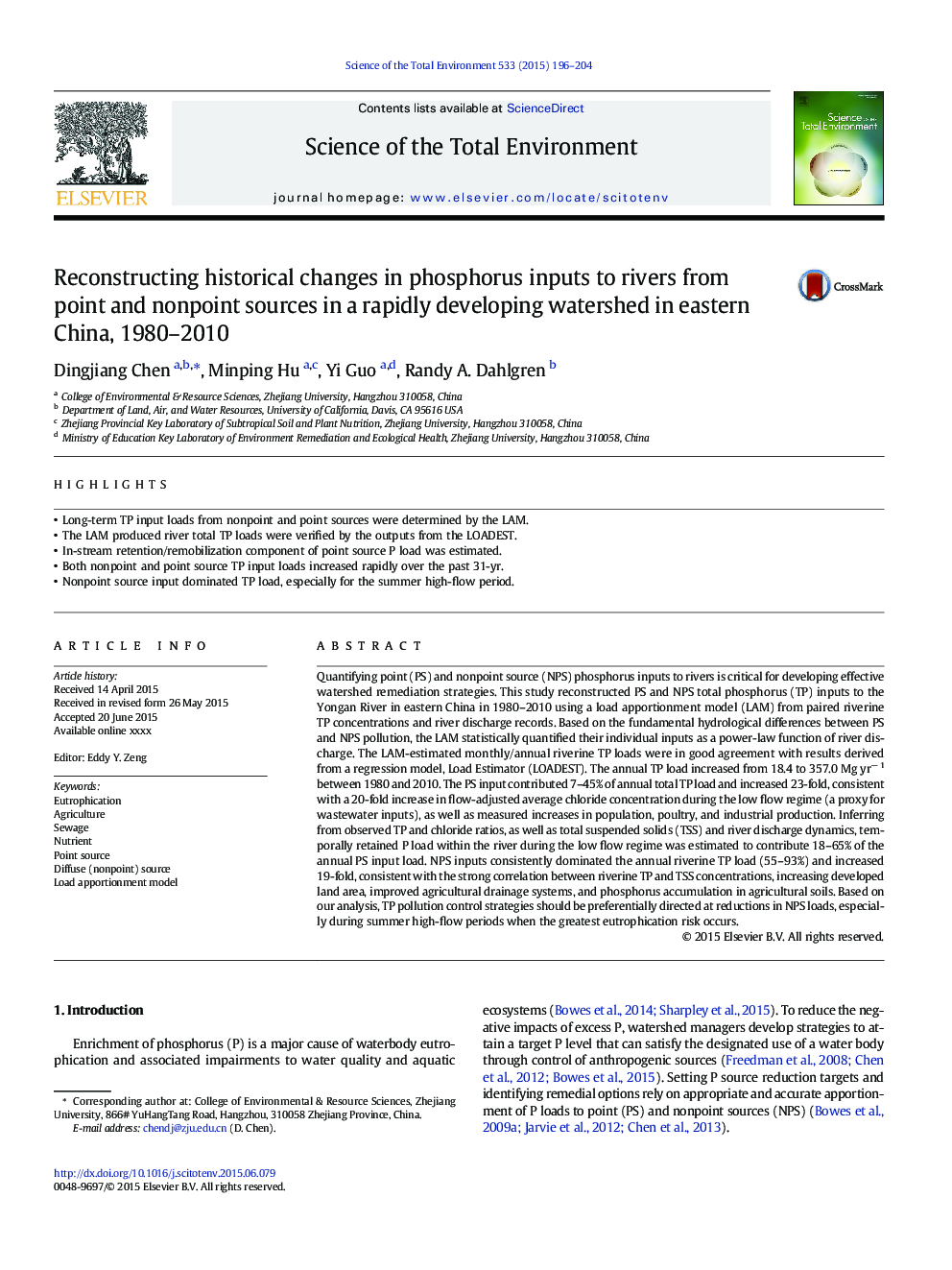| کد مقاله | کد نشریه | سال انتشار | مقاله انگلیسی | نسخه تمام متن |
|---|---|---|---|---|
| 6326230 | 1619751 | 2015 | 9 صفحه PDF | دانلود رایگان |
عنوان انگلیسی مقاله ISI
Reconstructing historical changes in phosphorus inputs to rivers from point and nonpoint sources in a rapidly developing watershed in eastern China, 1980-2010
ترجمه فارسی عنوان
بازسازی تغییرات تاریخی در ورودی فسفر به رودخانه ها از منابع نقطه ای و غیرمستقیم در یک حوزه آب و هوای سریع در حال توسعه در شرق چین، 1980-2010
دانلود مقاله + سفارش ترجمه
دانلود مقاله ISI انگلیسی
رایگان برای ایرانیان
کلمات کلیدی
یوتروفیزیک، کشاورزی، فاضلاب شهری، تغذیه منبع نقطه، منبع غنی (بدون نقطه)، مدل تقسیم بندی بار،
موضوعات مرتبط
علوم زیستی و بیوفناوری
علوم محیط زیست
شیمی زیست محیطی
چکیده انگلیسی
Quantifying point (PS) and nonpoint source (NPS) phosphorus inputs to rivers is critical for developing effective watershed remediation strategies. This study reconstructed PS and NPS total phosphorus (TP) inputs to the Yongan River in eastern China in 1980-2010 using a load apportionment model (LAM) from paired riverine TP concentrations and river discharge records. Based on the fundamental hydrological differences between PS and NPS pollution, the LAM statistically quantified their individual inputs as a power-law function of river discharge. The LAM-estimated monthly/annual riverine TP loads were in good agreement with results derived from a regression model, Load Estimator (LOADEST). The annual TP load increased from 18.4 to 357.0 Mg yrâ 1 between 1980 and 2010. The PS input contributed 7-45% of annual total TP load and increased 23-fold, consistent with a 20-fold increase in flow-adjusted average chloride concentration during the low flow regime (a proxy for wastewater inputs), as well as measured increases in population, poultry, and industrial production. Inferring from observed TP and chloride ratios, as well as total suspended solids (TSS) and river discharge dynamics, temporally retained P load within the river during the low flow regime was estimated to contribute 18-65% of the annual PS input load. NPS inputs consistently dominated the annual riverine TP load (55-93%) and increased 19-fold, consistent with the strong correlation between riverine TP and TSS concentrations, increasing developed land area, improved agricultural drainage systems, and phosphorus accumulation in agricultural soils. Based on our analysis, TP pollution control strategies should be preferentially directed at reductions in NPS loads, especially during summer high-flow periods when the greatest eutrophication risk occurs.
ناشر
Database: Elsevier - ScienceDirect (ساینس دایرکت)
Journal: Science of The Total Environment - Volume 533, 15 November 2015, Pages 196-204
Journal: Science of The Total Environment - Volume 533, 15 November 2015, Pages 196-204
نویسندگان
Dingjiang Chen, Minping Hu, Yi Guo, Randy A. Dahlgren,
